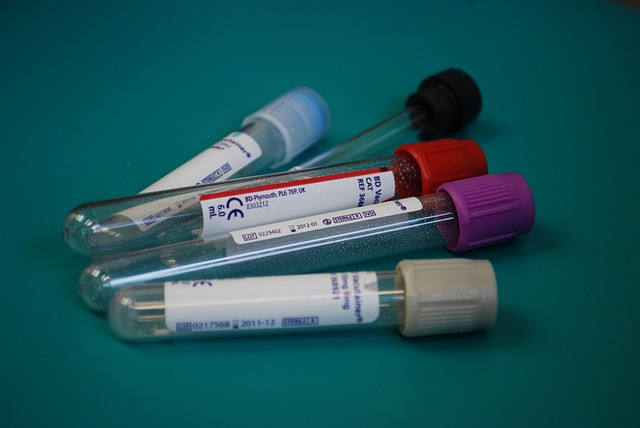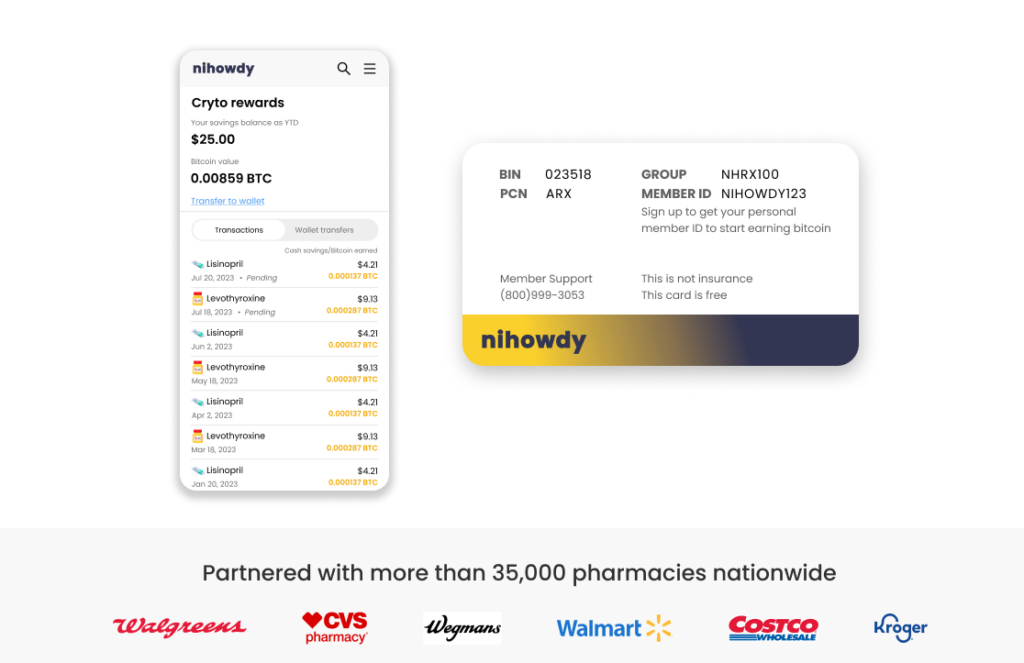Does Adderall Build Up in Your System? Understanding Duration and Effects

If you’re pondering ‘does Adderall build up in your system,’ it’s critical to understand that while Adderall is typically metabolized within 72 hours of the last dose, several factors can influence its elimination rate. This article sheds light on how Adderall is processed by your body and the circumstances under which it may accumulate.
Key Takeaways
Adderall is quickly eliminated from the body, with 97% gone after around 70 hours and detectable 46-72 hours after the last dose, though individual factors such as metabolism and body composition affect this duration.
Adderall, a central nervous system stimulant, is mainly used to treat ADHD by increasing dopamine and norepinephrine levels in the brain, but it’s often misused off-label for its focus-enhancing effects, leading to risk of addiction.
Adderall can be detected for varying durations depending on testing methods: 1-5 days in urine, 12-34 hours in blood, 20-50 hours in saliva, and up to 90 days in hair.
Adderall Accumulation: Fact or Myth?

There’s a widespread but incorrect belief that Adderall accumulates significantly in your body over time. The truth is, within roughly 70 hours after taking it, about 97% of the drug has been expelled from the body. Thus, Adderall doesn’t remain in your system for long durations. Still, it’s important to understand that traces of Adderall can be found within one’s system between 46 and 72 hours following their last intake.
The length of time during which Adderall exerts its effects differs among individuals due to metabolic differences and whether an extended-release or immediate-release formulation was used. Lasting about a day at most. Taking higher doses may result in greater residual amounts being left behind in the bloodstream thus prolonging the half-life of this medication. Chronic usage, especially when involving high doses regularly taken, might contribute to some buildup of Adderall inside your system as well as lead toward developing tolerance—this scenario potentially causes longer periods for how long does adderall stay present internally.
Half-Life of Adderall
The duration during which the concentration of a drug, such as Adderall, diminishes by 50% within the body is referred to as its half-life. In the case of Adderall, this timeframe ranges between 9 and 14 hours. Hence roughly 12 hours post-administration, an individual who has taken a dose of 20 mg would still have around 10 mg in their system.
Adderall takes up to approximately three days—or specifically about 72 hours—to be fully eliminated from someone’s body after they take their last dose. This duration can fluctuate depending on various elements like an individual’s metabolic rate and age.
Factors Affecting Accumulation
The period for which Adderall remains in the system can be significantly affected by a multitude of factors. These elements greatly influence how long the presence of Adderall is detected within one’s body. Considerations include:
The regularity with which Adderall is used, as frequent usage may result in accumulation and longer periods before it’s fully cleared from your system.
An individual’s metabolic rate, as this determines the speed at which Adderall is broken down and expelled from the body.
Composition of an individual’s body including both weight and fat content that could impact how quickly or slowly Adderall gets metabolized and subsequently eliminated.
It should be understood that these factors are subject to personal variation. Engaging with a healthcare professional will offer more tailored insights.
Other variables such as levels of physical activity, concurrent medications taken alongside supplements. Additionally, age-related differences and overall drug metabolism efficiency can all affect the half-life of additives within the country.This makes it even more important to discuss specifics with a qualified healthcare provider for guidance related to drugs duration.
How Adderall Works: ADHD Treatment and Beyond

Adderall, a powerful stimulant medication designed to mitigate the effects of attention deficit hyperactivity disorder (ADHD), functions by amplifying certain brain neurotransmitter levels, including dopamine and norepinephrine. This enhancement results in improved focus and alertness, helping individuals with ADHD overcome challenges like lack of concentration, difficulties with task completion, disorganization, and short attention spans.
The use of Adderall transcends its primary role in treating deficits associated with hyperactivity disorder (ADHD). It’s often employed off-label for heightening concentration and efficiency in high-pressure work or academic settings. Appealing this may seem for increasing productivity, it is important to recognize that such misuse can have severe consequences—setting unrealistic standards leading to poor work quality as well as risking the development of an addiction to Adderall.
Stimulating the Central Nervous System
Adderall, a stimulant drug, targets the central nervous system to elevate neurotransmitter activity in the brain. It notably increases dopamine levels, which leads to improved alertness, heightened attention spans, and greater energy.
The drug also boosts norepinephrine concentrations that help sharpen focus and enhance concentration abilities.
Off-Label Uses
Adderall, though adept at controlling symptoms of ADHD, is frequently used improperly for non-approved reasons. It’s typical to find people who do not have ADHD taking Adderall in order to enhance concentration, efficiency, and output — especially in environments filled with stress. This can result in setting unattainable goals, reducing the standard of work produced and could potentially lead to an addiction to Adderall.
Drug Testing for Adderall: Detection Windows and Methods

If you’re being tested for the presence of Adderall, it’s essential to grasp how its detection functions. There are several methods to discover Adderall within the body, which include:
Urine tests
Blood tests
Saliva tests
Hair analysis
The period during which Adderall can be identified in your system is influenced by a variety of elements such as dosage taken, an individual’s age, and their unique body composition.
Different testing techniques have varying windows for detecting Adderall usage:
A urine test may detect the drug from 1 up to 5 days post-use.
Blood samples show traces within approximately 12 to 34 hours.
Through saliva testing it’s identifiable between roughly 20 and 50 hours after use.
Analysis of hair follicles may reveal signs of the drug for a duration extending up to three months (90 days).
It’s critical to acknowledge that these durations serve only as general guidelines and might shift depending on each person’s circumstances.
Urine Test
Urine tests, frequently utilized for detecting Adderall in the body, can identify the drug within 1-2 days after consumption. This detection window might fluctuate based on various personal factors like metabolism and the amount taken. Compared to other types of drug tests, urine tests typically reveal greater concentrations of Adderall and are capable of tracing its presence from 72 up to 96 hours following its last use.
Blood Test
Blood tests offer a prompt method for detecting Adderall, accurately identifying the drug within 24 to 36 hours after use and maintaining detection capabilities up to 46 hours post-consumption.
Saliva Test
Saliva tests serve as a reliable means to identify the presence of Adderall, usually being capable of detecting the drug from 20 to 50 hours after the last dose is administered.
Hair Test
A hair test, which is a form of drug testing, offers the most extended period during which Adderall usage can be detected. Evidence of the drug can be discovered for as long as 90 days following its last ingestion.
Side Effects and Risks of Adderall Use

Adderall, when used for controlling ADHD symptoms, can be beneficial but it also carries potential risks and adverse effects. In the short term, individuals might experience an increase in heart rate and elevated blood pressure alongside other side effects like dry mouth, headaches, or reduced appetite. Extended use of Adderall may lead to psychological distress including anxiety, irritability, changes in mood as well as restlessness. Additionally, in some extreme cases, persistent usage could potentially induce psychotic symptoms or hallucinations.
Furthermore, the misuse of Adderall can escalate quickly from casual to compulsive use across various demographics with a notable prevalence among teenagers and adults in their early twenties.The abuse of this medication not only has the potential for addiction, but can also amplify existing mental health conditions such as bipolar disorder and different types of psychotic disorders.
Short-Term Side Effects
Soon after taking Adderall, its stimulant properties may induce side effects similar to the body’s natural fight-or-flight reaction, which includes a rise in heart rate and blood pressure. Typical short-term side effects of this drug include headaches, dryness in the mouth, feelings of nausea and fatigue, as well as symptoms of restlessness and irritability.
Long-Term Side Effects
The abuse of Adderall over an extended period can give rise to numerous enduring side effects, including the potential for Adderall addiction. The emergence of tolerance is one such side effect, necessitating progressively higher doses of the drug to attain its initial therapeutic benefits and thereby setting the stage for dependence and heightened risk of addiction.
Ceasing long-term use of Adderall may result in a host of withdrawal symptoms. These include extreme tiredness, mood swings marked by irritability, increased anxiety levels, depressive states, cognitive disarray as well as disruptions in normal sleep patterns.
Adderall Withdrawal and Addiction

Grasping the indications of both addiction to and withdrawal from Adderall is essential for its safe administration. The symptoms associated with withdrawing from this drug can present as:
Insomnia
Depressive states
Migraines
Apathy
Exhaustion
It’s critically important to engage with healthcare professionals and mental health experts prior to discontinuing the use of Adderall in order to effectively handle urges and mitigate withdrawal symptoms, thereby lessening the likelihood of relapse.
The physical and psychological aspects of an Adderall addiction may be identified by increased friendliness, feelings of superiority, parched mouth, stomach discomforts, along with overwhelming sensations of euphoria. Behavioral indicators often include ‘doctor shopping’—the practice seeking multiple prescriptions—as well as spending considerable amounts of time acquiring, consuming or recuperating from Adderall’s impact.
Withdrawal Symptoms
Experiencing withdrawal after discontinuing Adderall can lead to various symptoms such as:
Feelings of depression
Exhaustion
Difficulties with sleeping
Intense, distressing dreams
A heightened sense of hunger
Addiction treatment facilities provide therapies designed to cope with withdrawal symptoms effectively. These centers cater to the physical, psychological, and spiritual components involved in overcoming substance use disorder.
Signs of Addiction
It’s vital to be aware of the indicators of addiction to Adderall so that one can get help when it’s needed. The signs consist of persistently taking the drug even when faced with harmful results, disregarding one’s duties, requiring higher doses for the same euphoric effect, and suffering from withdrawal symptoms in the absence of Adderall.
Using Adderall through non-oral means like snorting, smoking or injecting increases the likelihood of encountering serious negative reactions and escalates the risk of developing an addiction to this drug.
Managing Adderall Use: Tips for Safe and Effective Treatment
Adderall is an effective medication for controlling ADHD symptoms, but responsible usage is crucial. This means adhering to appropriate dosage guidelines, maintaining transparent dialogue with medical professionals, and exploring different treatment options when needed.
It’s vital to understand that using Adderall inappropriately—without a prescription, at elevated doses or over extended periods than recommended by a physician—can result in severe health complications and may pose fatal risks. Strictly adhere to the guidance provided by your healthcare provider and refrain from distributing your medication to anyone else.
Proper Dosing
Ensuring the correct dosage is fundamental for the safe use of Adderall. Adhering to the prescribed amounts not only prevents Adderall misuse but also maintains its efficacy in managing ADHD symptoms. Notably, because children process Adderall differently than adults do, it is particularly vital to adhere to proper dosing guidelines within this demographic.
Communication with Healthcare Providers
It is essential to have ongoing conversations with your healthcare professionals if you are using Adderall. Consistent communication allows for the monitoring of how well Adderall works and its safety.
Discussing any side effects or worries that arise while taking Adderall with your healthcare provider is equally important.
Alternative Treatments
Should Adderall be inappropriate or fail to yield results, other treatment options might be explored. This can involve the use of non-stimulant drugs like Strattera, engaging in behavioral therapy, and participating in activities that connect mind and body such as exercise and yoga.
Conversing with your healthcare provider about these potential alternatives is crucial to determine a treatment strategy that works best for you.
NiHowdy’s Prescription Discount Card: Save on Adderall and Other Medications
The expense of prescriptions can weigh heavily on individuals, especially when it comes to chronic medications like Adderall. Fortunately, NiHowdy’s Prescription Discount Card is available to alleviate some of this financial strain. Utilizing this card entitles you to immediate savings on the retail cost of various medicines, including Adderall, making your prescription purchases more affordable.
The NiHowdy Prescription Discount Card includes a compelling benefit, the chance to accumulate Bitcoin rewards with each acquisition of your medication. This distinctive offering not only aids in reducing drug expenses, but also opens up possibilities for potential investment gains.
How It Works
The process to utilize NiHowdy’s Prescription Discount Card is straightforward and goes as follows:
Firstly, register to obtain a unique member ID which allows you to accrue Bitcoin with each medication purchase. Secondly, locate your required medication and evaluate the cost options available. Thirdly, present the savings card at a participating pharmacy when filling your prescription. Finally, enjoy reduced prices on your medications while simultaneously accumulating Bitcoin rewards.
Acquisition of this discount card comes at no cost and it offers immediate discounts on pharmaceuticals. It provides the supplementary advantage of gaining up to 3% back in Bitcoin for every prescription you refill.
Long-Term Benefits
Utilizing NiHowdy’s Prescription Discount Card offers more than just instant reductions in cost. The Bitcoin incentives gained by employing the card hold the possibility of increasing in value as time goes on, thus presenting users with a chance for considerable financial gain.
As these Bitcoin bonuses grow in value, they can gradually counterbalance and alleviate rising costs associated with healthcare for those who use the card. They might aid significantly in covering other major life expenses, positioning this card as an astute fiscal option.
Summary
Throughout our exploration, we have examined the multifaceted aspects of Adderall including its applications, impact on users, methods for detection, risks involved, and strategies for prudent use. It has been recognized that Adderall serves as a potent remedy for ADHD sufferers when used judiciously to circumvent adverse reactions and dependency issues. Ensuring ongoing dialogue with medical professionals, adhering to recommended doses, and weighing up alternative therapeutic options are all crucial steps in maintaining a responsible treatment regime.
Investigation revealed how NiHowdy’s Prescription Discount Card can alleviate financial burdens associated with acquiring medications similar to Adderall. This card not only provides instant reductions in prescription costs but also incorporates the innovative advantage of accumulating Bitcoin rewards with each purchase made through it – offering an amalgamation of immediate savings coupled with prospective fiscal gains over time.
Frequently Asked Questions
How does Adderall work in treating ADHD?
By boosting the brain’s dopamine and norepinephrine levels, Adderall enhances alertness and focus, effectively mitigating symptoms associated with ADHD.
How long does Adderall stay in the system?
After the final dose, Adderall remains traceable within the system for approximately 46 to 72 hours. Roughly 97% of Adderall is purged from one’s body after around 70 hours.
What are the side effects of Adderall use?
Use of Adderall can lead to a rise in blood pressure, an increased heart rate, and may result in psychological side effects such as irritability and anxiety if used for extended periods.
Prior to initiating Adderall use, being cognizant of these possible adverse effects is critical.
How can Adderall use be managed safely?
It’s crucial to adhere to the prescribed dosages for Adderall use, maintain open communication with your healthcare provider, and consider alternative treatments if necessary in order to safely manage the medication.
How does NiHowdy’s Prescription Discount Card work?
The Prescription Discount Card from NiHowdy offers immediate savings on medications, and members also have the benefit of accumulating Bitcoin rewards for each prescription bought when they use their unique member ID.
This card presents an excellent opportunity to reduce expenses on prescriptions while concurrently receiving rewards.


